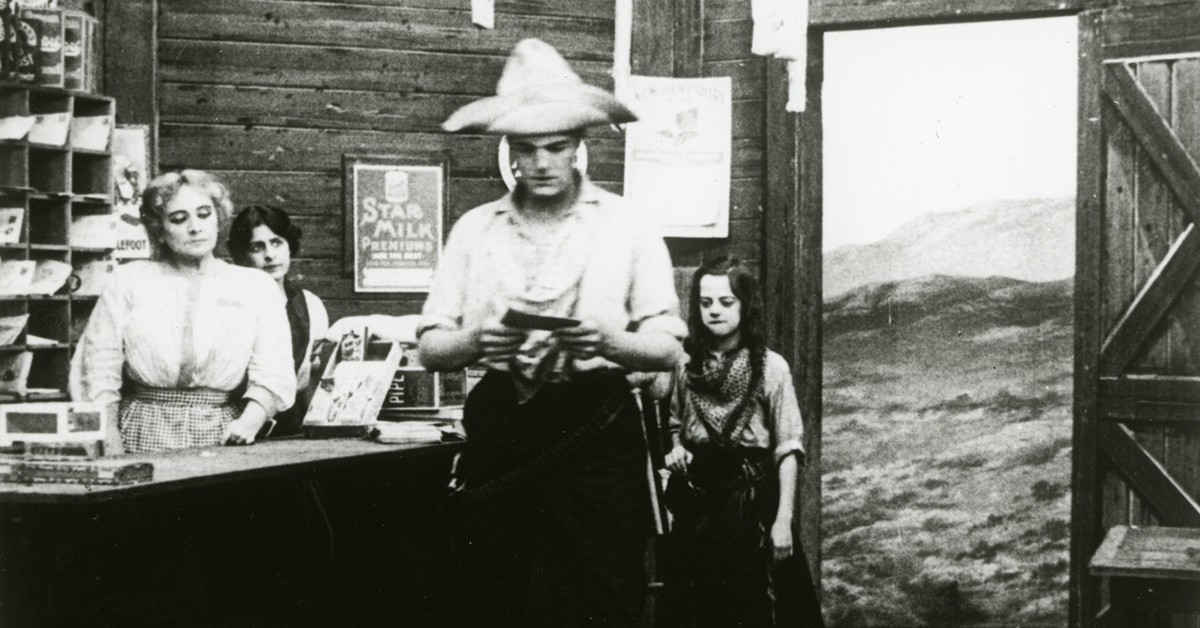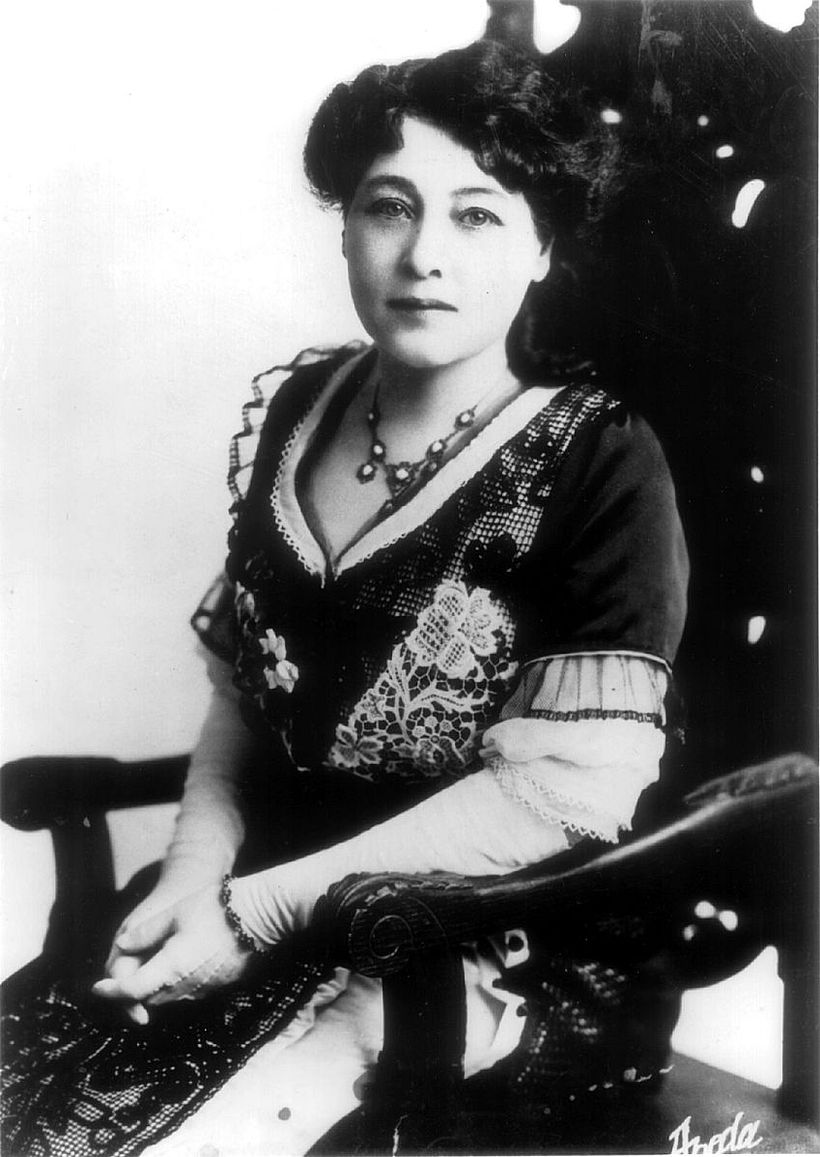6 Filmmaking Techniques Pioneered by Alice Guy-Blaché

Considered the first female filmmaker, Alice Guy-Blaché pioneered techniques that shaped the history of cinema
Alice Guy-Blaché was born in the Parisian suburb of Saint-Mandé in 1873. More than half a century after her death, her trailblazing contribution to the history of cinema is being rediscovered, and her story shared.
Until recently, Guy-Blaché’s significant role had been overlooked, erased from the history books, despite her body of work comprising over a thousand emotionally-engaging, universal, magical films that she wrote, directed, or produced. Her output during the first quarter of the twentieth century was far greater than Thomas Edison, the Lumières, and Georges Méliès.
Considered the first female filmmaker, she was among the first filmmakers to use techniques such as storytelling, editing, the close-up, synchronized sound, primitive special effects, and hand-tinted color. Her work was not only groundbreaking in a technical sense, but a thematic one too.

Alice got her start in film after learning that the Comptoir General de Photographie was in search of a secretary. At the interview, she met inventor Léon Gaumont, who would later buy the company and create L. Gaumont et Cie, which manufactured cinematographic equipment such as the Chrono de poche (1900), the Chronophone (1902), and the Chronochrome (1912). Gaumont hired Alice.
Six months prior to Auguste and Louis Lumière's first public demonstration of the cinematographe–considered the first-ever motion picture camera–in 1895 at the Grande Café in Paris, a 22-year-old Alice Guy-Blaché attended a private screening with Léon Gaumont. “It was the birth of cinema,” Alice tells an interviewer in the documentary, Be Natural: The Untold Story of Alice Guy-Blaché. Alice was inspired to create her own films seeing the medium's potential for telling “little stories that [she] would make up” and asked Gaumont if she could film some scenes.
Storytelling
At the time, photographers were capturing moving images all over the world. However, these were more like moving postcards, showing real-life scenes without telling a story–the Lumière’s short L’Arrivée d’un train en gare de La Ciotat (“Arrival of a Train at La Ciotat,” 1895) and James H. White’s Surf at Monterey (1897) are examples of this. Alice believed cinema had more to offer and wrote, directed, and produced her first film, La Fée aux Choux (“The Cabbage Fairy”), in 1896.
La Fée aux Choux (“The Cabbage Fairy,” 1896)
One of the first narrative films in the history of cinema, “The Cabbage Fairy” combines elements of fairy tale and folklore. A woman in a dress with a neckline decorated in flowers pulls naked newborns out from behind giant hand-painted cabbages. “There was a plain field, with a small terrace made of asphalt. We only had a tripod, which served as a photography tripod that would go in every direction. We cranked the camera by hand. And there, with my cameraman, I made my first film, which was La Fée aux Choux,” Alice recalls in old interview footage. This film was a great success, prompting Alice to retell the story in later productions such as Midwife to the Upper Class (1902) and Madame a des envies (“Madame’s Cravings,” 1906).
In 1897, Gaumont promoted Alice to head of production, a role in which she oversaw the creation of all films made to sell Gaumont cameras. La Vie du Christ (“The Birth, the Life and the Death of Christ,” 1906) is one of her most notable films from this period. This thirty-minute extravaganza features 25 sets as well as numerous exterior locations and over three hundred extras.
La Vie du Christ (“The Birth, the Life and the Death of Christ,” 1906)
The close-up
Alice experimented with different shots, and pioneered the use of the close-up. In Madame a des envies (“Madame’s Cravings,” 1906), the camera closes in on the female protagonist–a pregnant woman who can’t control her cravings–every time she eats or drinks something that she has just stolen from another character.
Madame a des envies (“Madame’s Cravings,” 1906)
Hand-tinted color
As can be seen in Le départ d'Arlequin et de Pierrette (“Pierrette's Escapades,” 1900) and Au bal de Flore (“At the Floral Ball,” 1900), Alice was among the first filmmakers to add hand-tinted color to her films. Each frame had to be painted by hand.
Le départ d'Arlequin et de Pierrette (“Pierrette's Escapades,” 1900)
Au bal de Flore (“At the Floral Ball,” 1900)
The Chronophone
Using a device called the Chronophone, which was invented by Léon Gaumont in 1902, Alice synchronized footage and sound. She may have even created the music video back in 1905 when she filmed singers lip-syncing to a pre-recorded playback.
Exploring social issues through film
When it came to casting and the subject matters she explored, Alice made groundbreaking, brave decisions. Alice put women center stage. Her female characters were full of personality and depth. They didn’t need to be “ladylike,” they could be funny and brave. Blaché’s Two Little Rangers features two gun-toting heroines. A young girl with long curls backs a villain off a cliff. Her 1906 film, The Consequences of Feminism, imagines a world where gender roles are reversed.
Two Little Rangers (1912)
Alice directed one of the first films with an entirely Black cast, A Fool and His Money (1912). She explored social issues such as women’s role in society, anti-semitism, immigration, and religion.
The Making of an American Citizen (1912)
“The Making of an American Citizen” (1912) tells the story of an immigrant couple moving from Eastern Europe to the United States.
Solax
In 1907, Guy-Blaché resigned from Gaumont to move to the USA with her husband, Herbert. There, Alice founded her own company, Solax–another unprecedented move. She oversaw all production stages–she would even jump in her car or on her horse to scout locations.
By 1912—the year she gave birth to their son, Reginald—Solax was so successful that Blaché built her own state-of-the-art studio in Fort Lee, New Jersey, the birthplace of the American film industry. On one studio wall, she hung a sign that read, “Be natural”–a message to her actors. “It’s all I asked of them,” says Alice in the documentary footage. Eventually, Solax and the rest of the East Coast film industry rapidly declined throughout the 1920s as a result of the phenomenal growth of motion-picture facilities in Hollywood.
Alice Guy-Blaché pioneered techniques that shaped the history of cinema. Finally, she is being recognized as a trailblazer who played a key role in the evolution of film industries across continents.
You may also like:
–What Is Matte Painting for Cinema?
–Top 5: Brown Girls Doc Mafia
–VFX: Peter Ellenshaw’s Defining Moments












2 comments
inuin
@eloiseedgington This is just amazing!
eloiseedgington
StaffThanks @inuin! I recommend watching Pamela Green's documentary if you're interested in learning more about Alice's life and work!